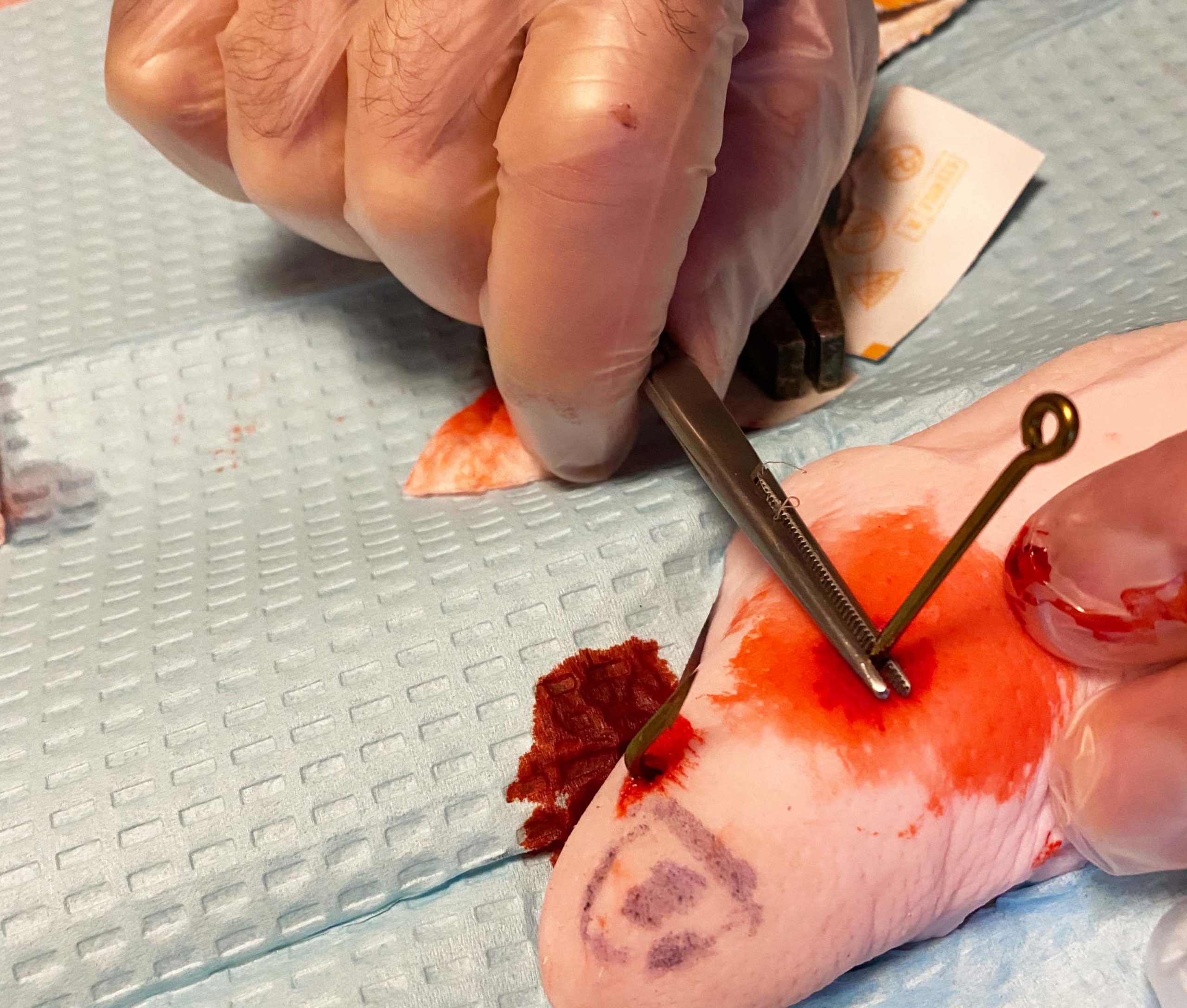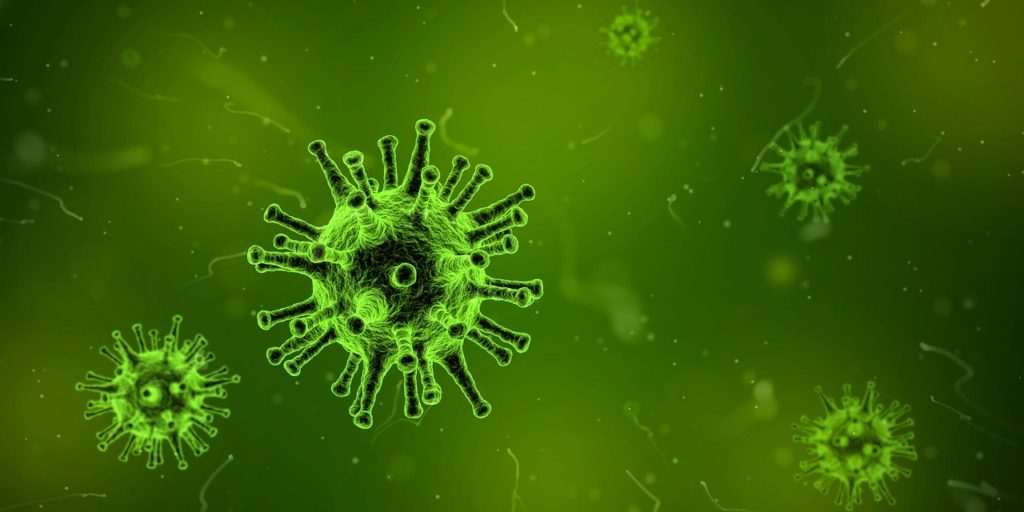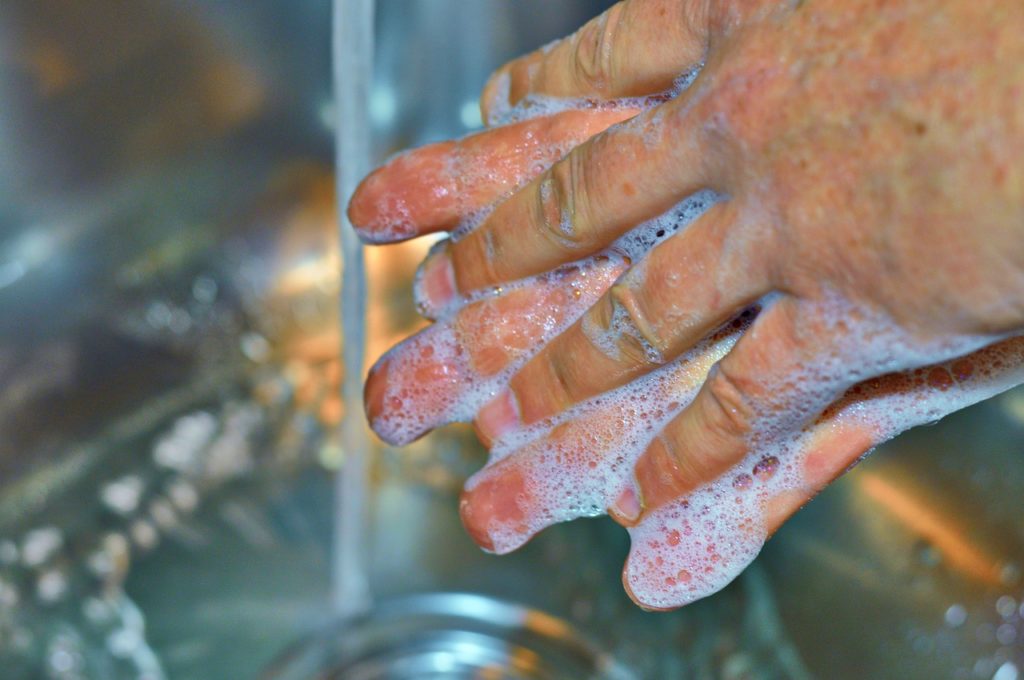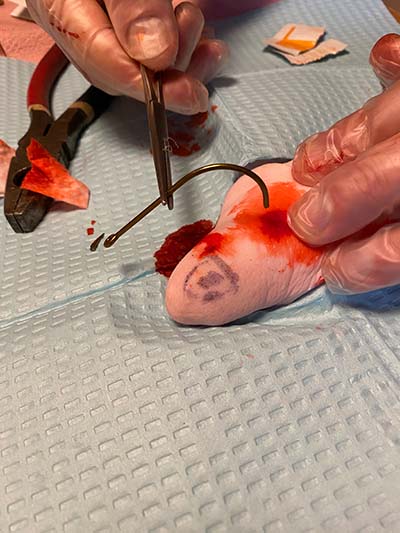March 16, 2020
Marine medicine: Understanding and treating infection types
Marine Medical


Infections have shut down fishing operations across the world, which is why it’s essential to both understand infection types that cause symptoms as well as what sort of preventative measures can be taken to avoid them entirely.
As a baseline for this topic, the definition of an infection is “the invasion of an organism’s body tissue by disease-causing agents. An agent can be bacteria, viruses, fungus and parasites. Infections can be transmitted in a variety of ways.
Exactly how an infection can spread as well as its effect on the human body depends on the type of infective agent. Some infectious diseases can be passed from one person to another easily, while others are harder to transmit. The flu, a cold, measles or a sore throat may be transmitted by a kiss or a simple touch or cough from one person to another. Infectious diseases such as AIDS, herpes and hepatitis are only passed by a closer contact called blood-borne transmission as blood to blood or sexual intercourse.
Some examples of how infections are transmissible, communicable of contagious are:
- Skin contact
- Bodily fluids
- Contact with feces
- Airborne particles
- Surface contact
There are many different root causes of these infections, all of which need to be fully understood in order to determine the best approach for prevention and treatment.

Bacteria Infection
Most of the Earth’s biomass is made of bacteria, which are single-celled micro-organisms. Bacteria can live in almost any kind of environment, which ranges from extreme heat to intense cold. Some can even survive in radioactive waste. Bacteria are also highly adaptable. That can cause problems for people because it often results in resistance to antibiotics.
There are trillions of strains of bacteria, and a few of these may cause diseases in humans. Some bacteria are beneficial to human digestion and airways. However, there are also plenty of “good” bacteria like the digestive bacteria contained in our stomachs.
Some examples of bacteria diseases are:
- Cholera — deadly
- Bubonic plague — deadly
- Bacterial meningitis
- Pneumonia
- Skin infections
Bacterial infections can be treated with antibiotics but some strains become resistant and can survive treatment. Antibiotics resistant bacterial infections and or diseases have been an ever-increasing which has become a major a concern to infectious diseases specialists and the Centers for Disease Control and Prevention.

Viral infections
Viral infections are as numerous and as deadly as bacterial diseases. Viral infections can range from the common cold to coronavirus to Ebola. Unlike bacteria, viruses are made up of only a genetic code that is encapsulated in a shell made up of protein and fat.
Viruses invade a host and attach to the host’s cell. By this process of attachment and release of genetics (commanding seed matter), the virus rapidly replicates and kills the host cells only to go on to infect new cells and repeats the cycle. Since the virus is only genetic material, it may remain dormant and reactivate when conditions demand so.
Some examples of viral infections are:
- The common cold, which causes fever and sinus infections
- Herpes causing warts and skin infections
- Nova virus causing gastroenteritis
- HIV
- Polio
- Ebola
- Swine flu
- Influenza
Antiviral medications can help in some cases, as they can either prevent the virus from reproducing or boost the body’s immune system response. Antibiotics are not effective against viruses, but most treatments are directed to relieve symptoms while the immune system combats the virus without assistance from drugs and treatments.
Fungal infections
A fungus is a many-celled parasite that can reproduce by spreading spores. Many fungal infections will appear on the topical skin as a persistent rash. Inhaled fungal spores can cause thrush and candidiasis.
Examples of fungal infections are:
- Ringworm
- Athletes’ foot
- Thrush

Preventing infections
Since commercial fishermen work in such harsh environments, the demands of the body’s protective immune system are much greater. A healthy active lifestyle can help keep the immune system strong and able to defend the body against different kinds of infections. Fishermen can stop the spread of communicable diseases with some simple common sense procedures that can be followed on their vessels and onshore.
- Cover the mouth every time during coughing
- Only drink clean water
- Only eat very cooked meat
There is no single way to prevent all infectious diseases. However, the following tips can reduce the risk of transmission:
- Wash your hands often, especially before and after preparing food and after using the bathroom
- Clean surface areas and avoid leaving room-temperature food exposed when cooking
- Receive any and all recommended vaccinations, and keep them up to date
- Only take antibiotics when prescribed, and be sure to complete any recommended course even if symptoms improve earlier than anticipated
- Disinfect rooms where there may be high concentrations of bacteria, such as kitchen and bathroom
- Practice safe sex by receiving regular STD checks, using condoms, or abstaining altogether
- Avoid sharing personal items, such as toothbrushes, combs, razor blades, drinking glasses, and kitchen utensils.
- Follow a doctor’s advice about traveling or working when you are ill, as you could infect others
Given how much they are handling gear and fish, the majority of commercial fishermen’s on-the-job infections are infections of the fingers and hands. That’s why it’s especially important to understand what it means to understand these types of infections.

Treating and preventing infections of the fingers and hands
Fish and fish products are often contaminated with infectious bacteria, which explains why fishermen are so prone to infections via the involuntary penetration into soft tissue by fish spines and bones. Bacteria can be easily carried into these open wounds by fish slime, fish intestinal parts and contaminated vessel components. Additionally, the handling of ropes, cables and moving metal parts in the unpredictable environment of the sea adds to the likelihood of bloody injuries that are centered on the hands.
Prevention is always better than treatment. All finger and hand infections are very painful and disabling. Some infections can cause permanent disability, possibly ending a fisherman’s career. Infections in the hands should always be treated aggressively within the following guidelines:
- Thorough washing of the hands at the end of every work period with a hospital grade anti-microbial, preferably a solution of 20 percent chlorhexidine gluconate.
- Thorough cleaning and rinsing of working rubberized gloves with a concentrated solution of commercial bleach. The effectiveness of any chlorinate solution is the amount of time the rubber gloves are immersed in the bleach solution, the longer the better.
- Prompt treatment and cleaning of all minor cuts, scratches and abrasions. The exterior skin provides natural protection, but a simple scratch can open up the opportunity for a full body infection. Remember: cleaned, dried and covered is optimum.
- Aggressive early treatment including topical and oral antibiotics if throbbing pain or inflammation is noted anywhere in the hands or fingers.
Knives and fish hooks
Injuries caused by a fisherman’s working tools such as knives and fish hooks should be treated aggressively and immediately. These instruments can directly inject harmful bacteria deep in the soft tissue.
In order to remove a fish hook with the minimum tissue damage, follow this simple procedure:
 Before attempting to remove the hook, wash the hook and surrounding tissue with anti-microbial soap followed by an anti-infective solution of povidine 10 percent.
Before attempting to remove the hook, wash the hook and surrounding tissue with anti-microbial soap followed by an anti-infective solution of povidine 10 percent.- Allow the solutions to have 2-3 minutes contact time with the hook and surrounding areas.
- The injection of a local anesthetic (lidocaine 1 percent) may be needed to proceed.
- If the barbed section of the hook is totally embedded within the fisherman’s tissue, the best procedure is to push the barbed tip forward until completely out of the tissue area in question.
- Cut the barbed tip of the hook with a cleaned, washed and dried heavy-duty wire cutter as to create a clean break at the remaining hook shaft still in the tissue.
- Any bunted end should be removed by either a wire cutter or the use of a file. The whole idea is to reduce the resistance for the smooth reverse exiting of the cut shaft as it is backed our o the initial wound.
- The injured crew member should have the wound irrigated with a sterile irrigation solution of sodium chloride 0.9 percent, if needed apply the sterile solution into both openings in order to flush out any and all foreign bodies such as metal or rust.
- A sterile absorbing dressing should be applied to keep the wound free of potential infections. Limit the opportunity for water or sweat exposure.
- Change the dressing and clean the wound area at least twice per day and check for any pus or inflammation.
The ability to give and receive proper medical attention while at sea is extremely limited. That’s why your medical skills and the supplies you have on hand can make all the difference. Preventing injuries is always the most cost-effective action plan, but that underscores why it’s essential to get proper training, be prepared, but most importantly, always think: Safety first.
For additional information concerning the best medical kit for your vessel visit marinemedical.com or email your request to info@marinemedical.com. You can also reach us by calling 800-272-3008.






